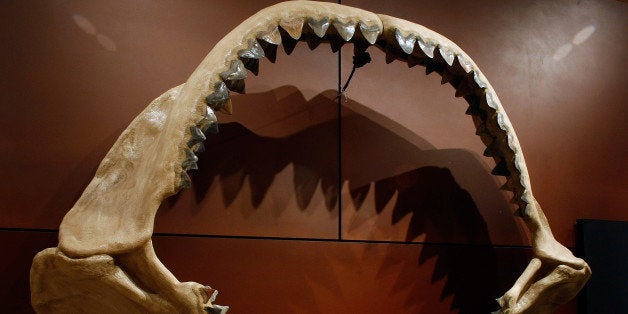
Spain's Oceanography Institute announced on Monday that researchers discovered megalodon fossils at the base of an underwater mountain near the Canary Islands, suggesting that the prehistoric predator once lived along the coast of northwest Africa.
The large fossil deposit was first uncovered in October, and the research team confirmed this week that the fossils do indeed belong to the ancient mega-shark and not another extinct species.
Found about 6,500 feet below the surface, the fossil deposit included remains from several marine creatures, including other species of shark, whale and Sirenia mammals (often called sea cows), EFE news agency reported.
"The presence of this super-predator, as well as other shark species... demonstrates the existence of huge amounts of food such as whales, seals, sirenians or fish stocks in Canarian waters at that time in the history of Earth," Pedro J. Pascual, a marine biologist at the institute, said in a written statement.
In a Discovery Channel special last year, paleontologist Chuck Ciampaglio said the Carcharocles megalodon was "probably the apex predator of all time," ranking the mega-shark even above Tyrannosaurus rex. Megalodon may have spanned more than 50 feet, based on the length of its teeth, and may have roamed ancient seas for 25 million years.
Earlier this year, Discovery sparked outrage after it aired a faux documentary special entitled "Megalodon: The Monster Shark Lives," in which a group of presumed researchers go on a search for the creature. The network was heavily criticized for misleading viewers and presenting unsubstantiated "evidence" that the ancient mega-shark still exists.
At the end of the segment, the following disclaimer flashed across the screen: "None of the institutions or agencies that appear in the film are affiliated with it in any way, nor have approved its contents."
